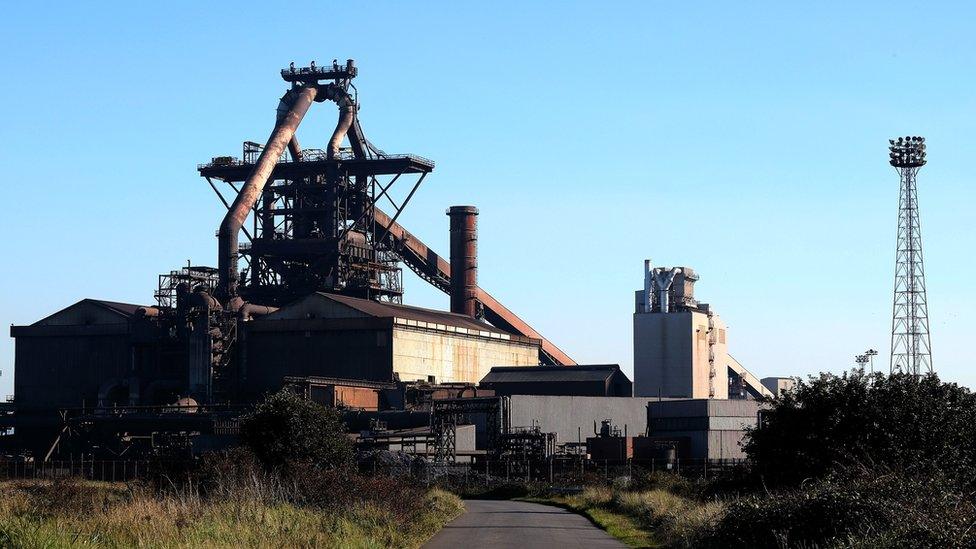Redcar's landmark blast furnace demolished
- Published
The moment Redcar's industrial skyline changed forever
An industrial landmark that had dominated the Teesside skyline since the 1970s has been demolished.
A 800ft (250m) exclusion zone was put in place for the levelling of the Redcar blast furnace, the casting houses, the dust catcher and conveyors.
Air horns were sounded at about 09:00 GMT shortly before the structure was felled in a matter of seconds.
Standing 365ft (111m) high, the blast furnace once produced 3.6 million tonnes of iron a year.
The former steelworks site is being cleared to create the Teesworks industrial zone, the UK's largest freeport.
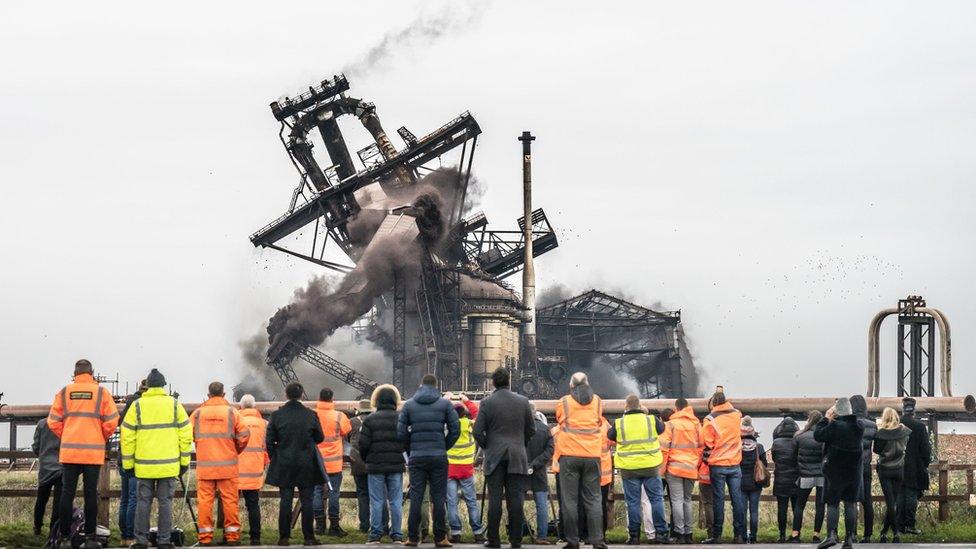
The giant structure was the last of about 100 furnaces that once lined the River Tees
Thompsons of Prudhoe, which carried out the demolition with 175kg of explosives, spent months preparing and clearing the area.
Observers were asked to watch from a safe distance with access along Gare Road in Redcar closed from 08:00.
The detonation was heard six miles (10km) away across the mouth of the Tees in Hartlepool.
Tees Valley Mayor Ben Houchen said the skyline had "changed forever".
"We can never understate how much the steelworks site has defined Teesside's history and shaped our communities, but I've always been clear we need to look to the future to create new jobs on this site that will employ generations of local people, just as the steelworks once did," the Conservative politician said.
"With almost all of the major iron and steelmaking structures down, a new skyline will emerge on the Teesworks site as construction ramps up on new investments like Net Zero Teesside and SeAH Wind's offshore wind monopile facility."
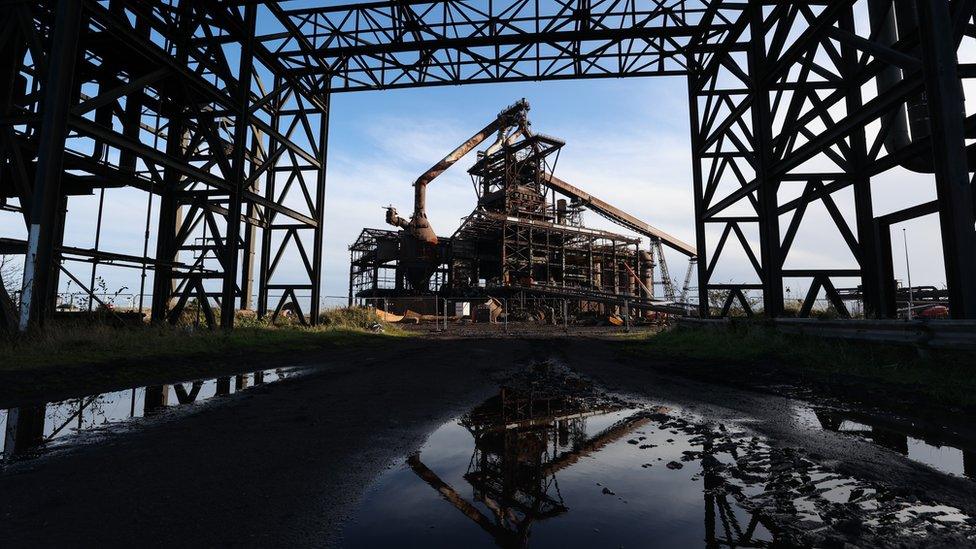
The Redcar blast furnace was the last remaining of about 100 furnaces that used to line the River Tees dating back to the late 1800s
Redcar MP Jacob Young, also Conservative, described it as a "day of mixed emotions".
"The best way to honour everything that the blast furnace came to symbolise is to press ahead in creating a better local economy for tomorrow."
Ahead of the demolition, Teesworks said efforts had been made to reduce the impact of dust. However, it urged members of the public to be aware of the wind direction.
The four enormous gas stoves which heated the furnace are set to be demolished separately in the coming weeks.
Two-thousand jobs were lost when the furnace was shut down for the final time in 2015.
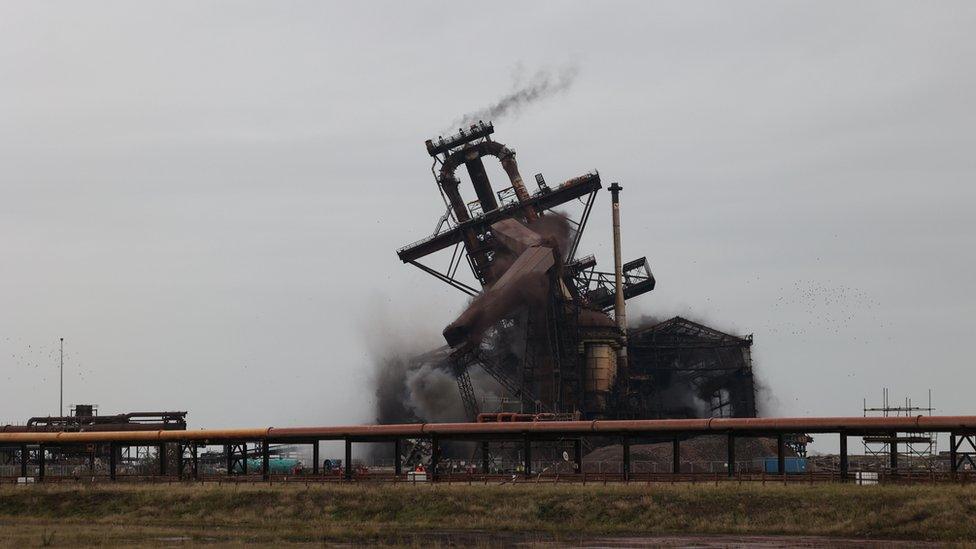
Having stood for decades, the blast furnace was flattened in seconds

Follow BBC North East & Cumbria on Twitter, external, Facebook, external and Instagram, external. Send your story ideas to northeastandcumbria@bbc.co.uk, external.
Related topics
- Published22 November 2022

- Published1 October 2022
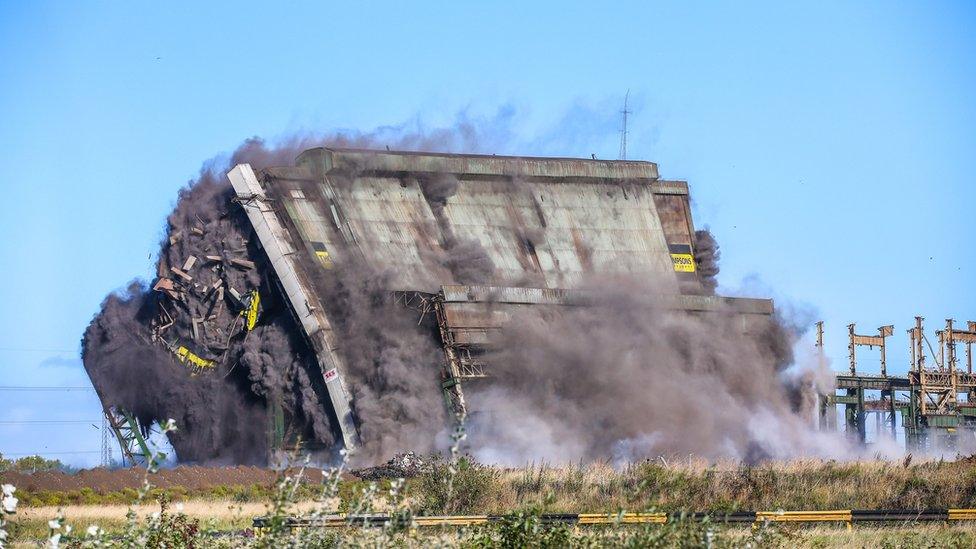
- Published20 September 2022

- Published2 August 2021
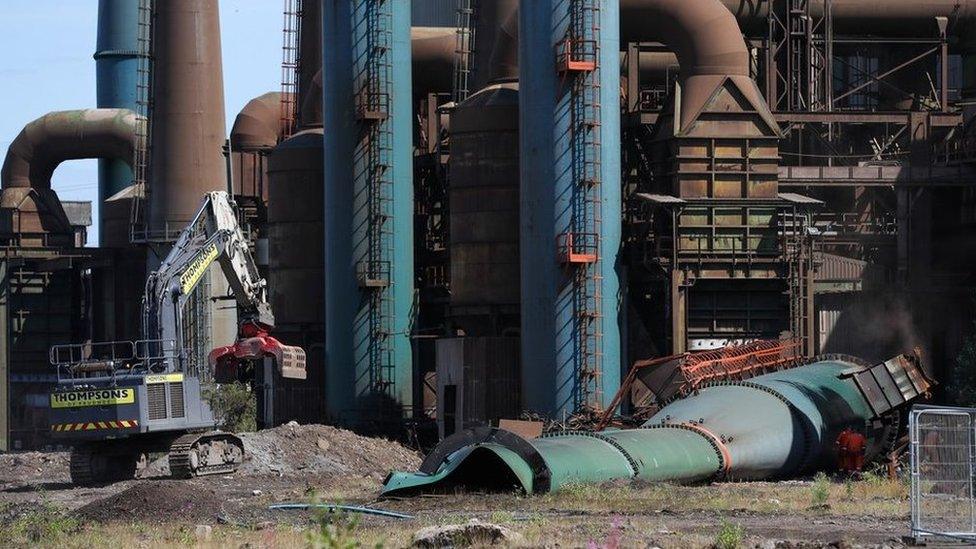
- Published12 October 2015
